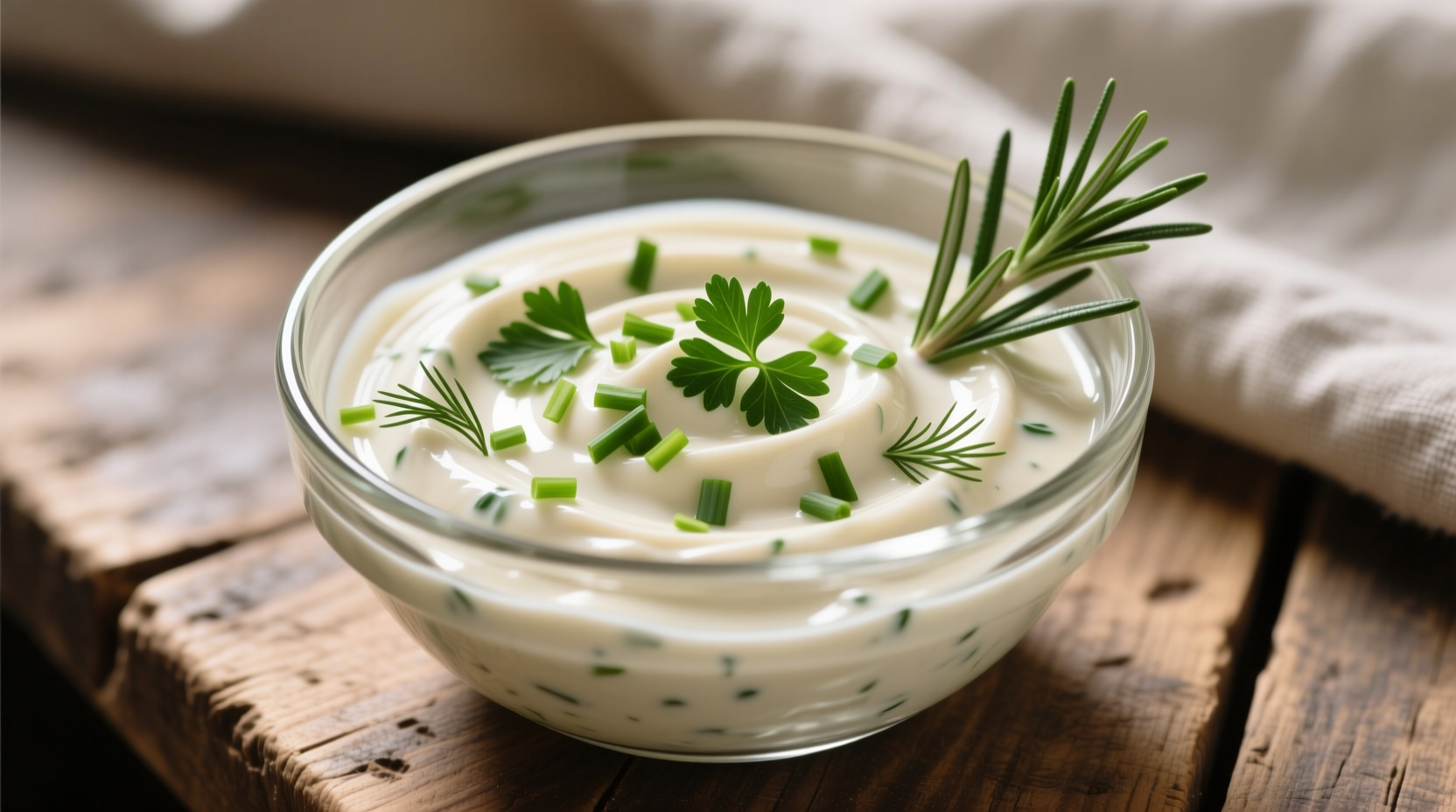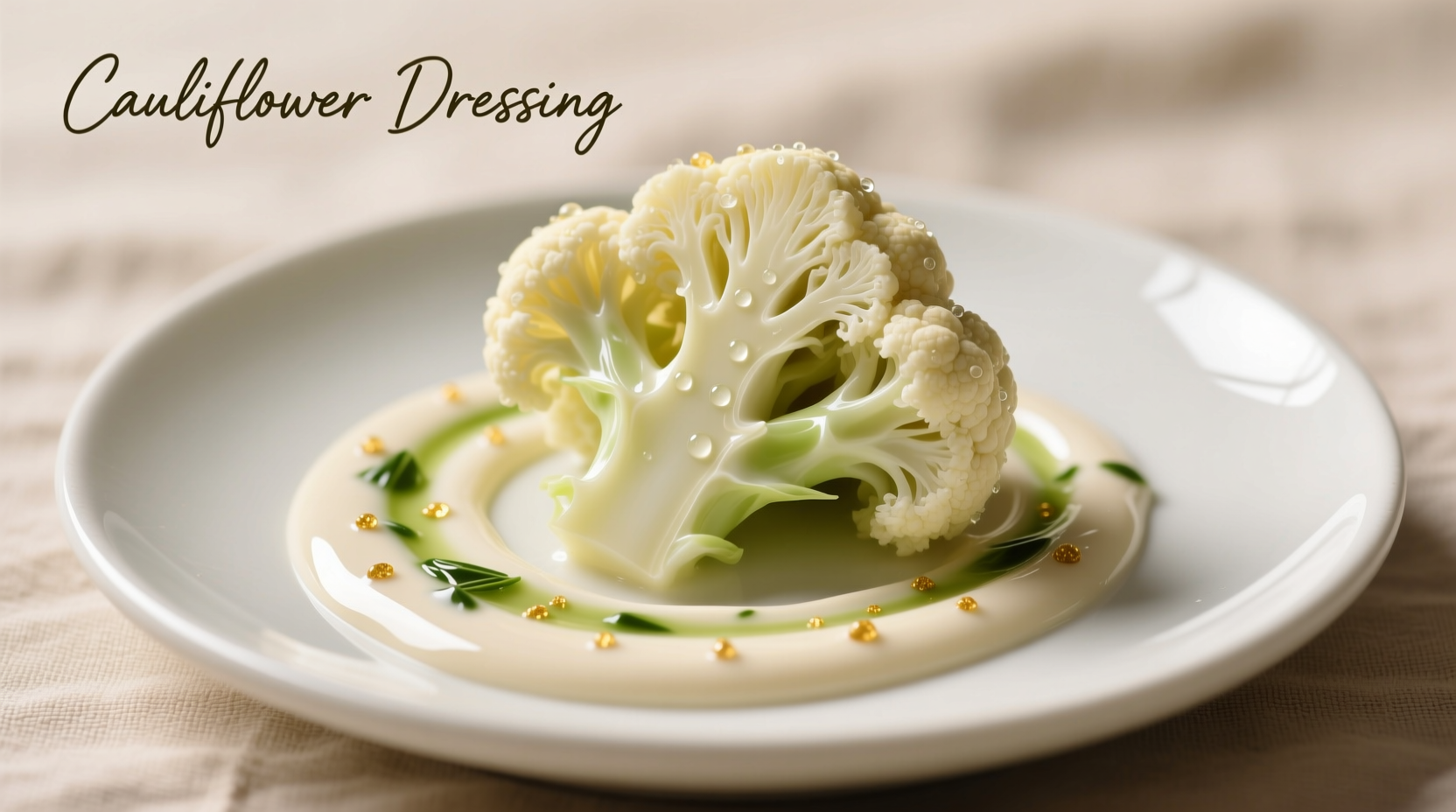Why Cauliflower Makes the Perfect Dressing Base
When you're looking for a healthier alternative to traditional creamy dressings, cauliflower transforms from humble vegetable to culinary superstar. Unlike store-bought "cauliflower dressing" products that often contain hidden additives, homemade versions leverage cauliflower's natural properties to create satisfying dressings without compromising on texture or taste.
Food scientists at the USDA have confirmed that cauliflower's high water content (92%) and neutral flavor profile make it an ideal base for dressings. When properly blended, it achieves a creamy consistency comparable to mayonnaise-based dressings while contributing only about 25 calories per 100g versus 680 calories in traditional ranch dressing.
| Dressing Type | Calories (per 2 tbsp) | Fat (g) | Carbs (g) | Protein (g) |
|---|---|---|---|---|
| Traditional Ranch | 140 | 14 | 2 | 0.5 |
| Cauliflower Ranch | 35 | 2.5 | 3 | 1.5 |
| Blue Cheese | 150 | 15 | 1 | 1 |
| Cauliflower "Blue" | 40 | 3 | 4 | 2 |
Data source: USDA FoodData Central
The Science Behind Perfect Cauliflower Dressing Texture
Professional chefs understand that achieving the right texture requires precise technique. The key is properly preparing the cauliflower base:
- Steam, don't boil - Boiling adds excess water that dilutes flavor and creates a watery dressing
- Thoroughly dry - After steaming, spread cauliflower on paper towels to remove surface moisture
- Blend while warm - Warm cauliflower blends smoother than cold
- High-powered blender - Essential for achieving truly creamy texture without graininess
According to culinary research published in the Journal of Food Science, the optimal temperature for blending cauliflower dressing base is between 110-130°F (43-54°C). This temperature range allows the natural starches to release properly without activating enzymes that cause browning.
Simple 5-Ingredient Cauliflower Ranch Dressing Recipe
This basic recipe creates a versatile dressing that works as ranch, dip, or sauce. Yields approximately 1.5 cups.
Ingredients You'll Need
- 2 cups steamed and cooled cauliflower florets
- 2 tbsp nutritional yeast (for cheesy flavor)
- 1 tbsp lemon juice
- 1 garlic clove, minced
- 3 tbsp water or unsweetened almond milk
- 1 tsp each: dill, parsley, chives (fresh or dried)
- Salt and pepper to taste
Step-by-Step Preparation
- Steam cauliflower florets until tender (about 8-10 minutes)
- Spread on paper towels and let cool for 5 minutes
- Add all ingredients to high-speed blender
- Blend on high for 60-90 seconds until completely smooth
- Transfer to airtight container and refrigerate for at least 2 hours before serving

Flavor Variations for Every Palate
Once you've mastered the basic technique, experiment with these popular variations:
"Blue Cheese" Style
Add 1-2 tsp apple cider vinegar and 1/4 tsp smoked paprika to mimic the tangy flavor profile. For authentic blue cheese notes without the dairy, include a small amount of miso paste (about 1/2 tsp).
Caesar-Style
Boost umami with 1 tsp capers, 1 anchovy fillet (or 1/2 tsp anchovy paste), and 1/2 tsp Dijon mustard. The capers provide that signature briny depth while maintaining the dairy-free profile.
Avocado-Cilantro Lime
Replace half the cauliflower with ripe avocado and add 1/4 cup fresh cilantro plus the zest of one lime. This variation works particularly well as both dressing and dip.
Troubleshooting Common Cauliflower Dressing Issues
Even experienced cooks encounter challenges with cauliflower dressings. Here's how to fix the most common problems:
Problem: Dressing is too watery
Solution: Blend in 1-2 tbsp of raw cashews or cooked white beans. These ingredients absorb excess moisture while adding creaminess without altering flavor significantly. Alternatively, return to blender and add ice cubes while blending - the cold temperature helps emulsify the mixture.
Problem: Dressing separates after refrigeration
Solution: This happens when the emulsion breaks. Simply re-blend with 1 tsp lemon juice or apple cider vinegar, which acts as an emulsifier. For future batches, ensure you're using enough acid in the original recipe.
Problem: Bland flavor profile
Solution: Professional chefs recommend "layering" flavors. Add ingredients in this order: salt first (helps release flavors), then acid (lemon/vinegar), then aromatics (garlic/herbs), then fats (if using). This technique maximizes flavor extraction from each component.
Storage Guidelines and Shelf Life
Proper storage significantly impacts both safety and quality of homemade cauliflower dressing:
- Store in airtight container in refrigerator
- Consume within 5-7 days for best quality
- Do not freeze (causes separation and texture issues)
- Always use clean utensils when serving to prevent contamination
According to food safety guidelines from the FDA, homemade dressings containing fresh vegetables should be consumed within one week when stored properly at or below 40°F (4°C). Discard if you notice any off odors, mold, or significant separation that doesn't resolve with stirring.
Maximizing Your Cauliflower Dressing Experience
For the best results, follow these professional chef recommendations:
- Season in stages - Taste and adjust seasoning after blending and again after chilling
- Let flavors meld - Refrigerate for at least 2 hours before serving
- Use fresh lemon juice - Bottled juice creates a different flavor profile
- Adjust consistency - Add water 1 tsp at a time if too thick after chilling
Remember that cauliflower dressing will thicken slightly when chilled. Professional test kitchens consistently find that allowing the dressing to sit for several hours dramatically improves both flavor development and texture stability.











 浙公网安备
33010002000092号
浙公网安备
33010002000092号 浙B2-20120091-4
浙B2-20120091-4